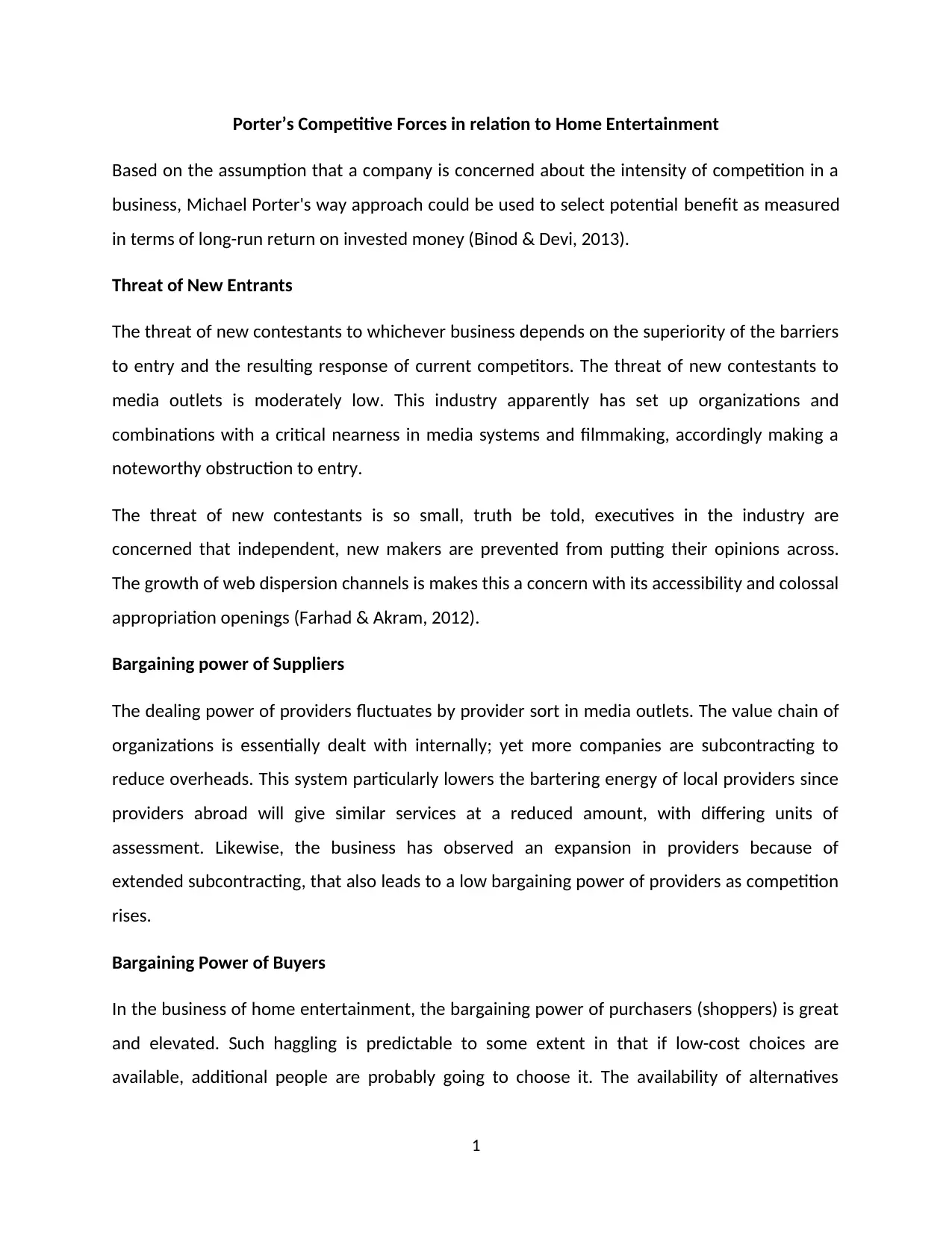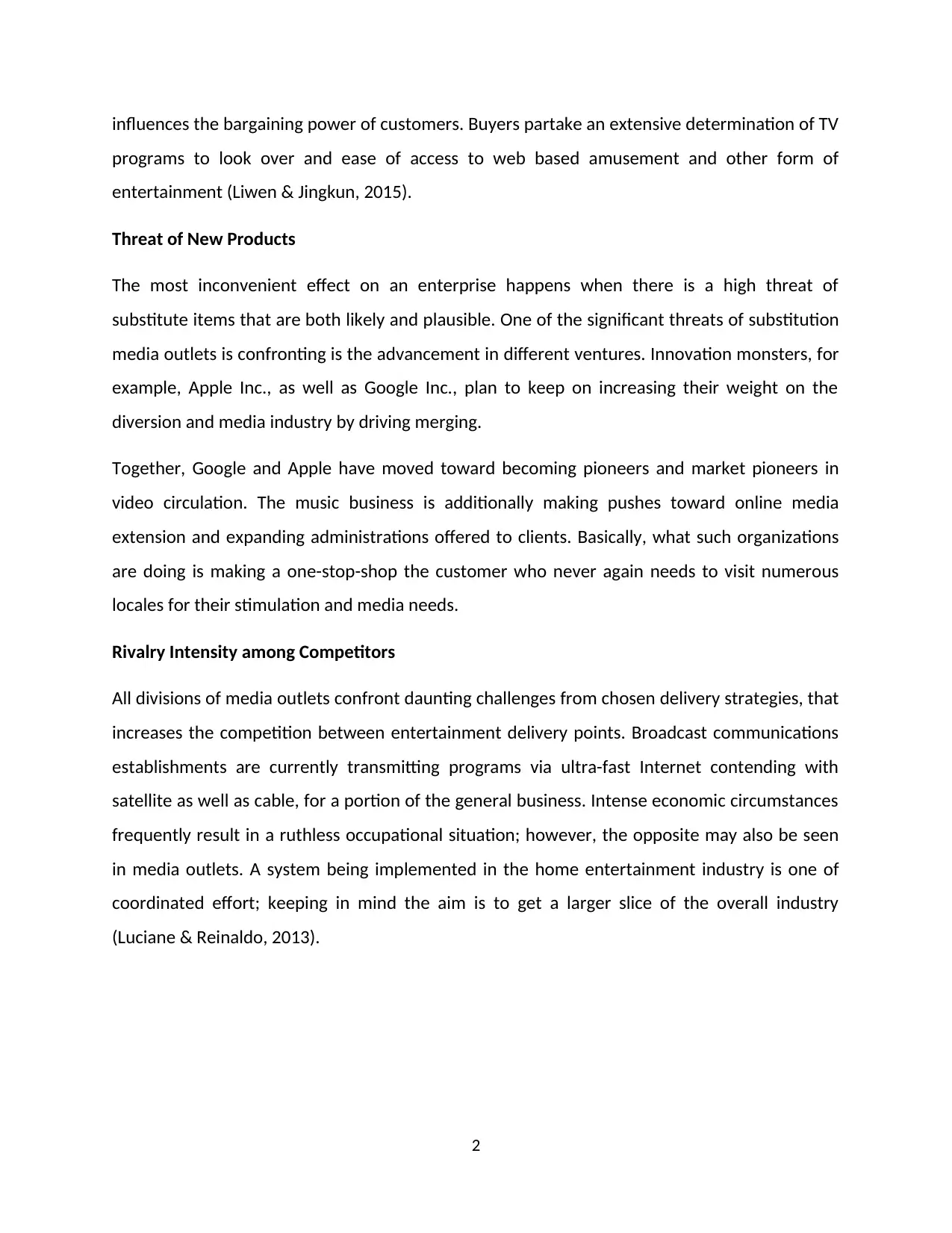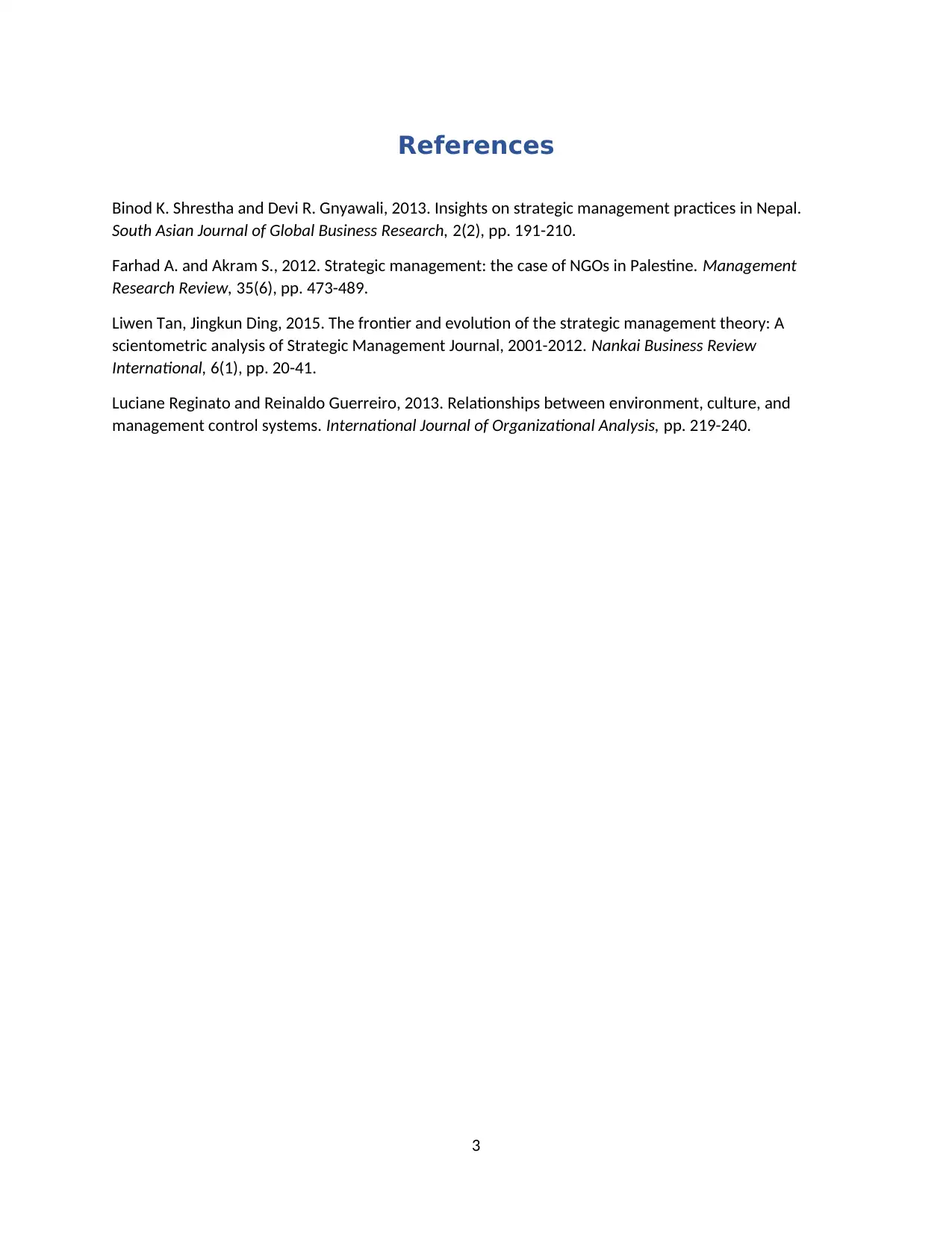Analysis of Porter's Competitive Forces in Home Entertainment
VerifiedAdded on 2019/10/30
|3
|762
|344
Report
AI Summary
This report applies Michael Porter's Five Forces framework to analyze the competitive dynamics within the home entertainment industry. It examines the threat of new entrants, highlighting the barriers to entry and the impact of web distribution channels. The bargaining power of suppliers is discussed, noting the influence of subcontracting and globalization. The high bargaining power of buyers, attributed to the availability of alternatives like streaming services, is also analyzed. The threat of substitute products, particularly from tech giants like Apple and Google, is considered. Finally, the report addresses the intensity of competition among existing players, emphasizing the challenges posed by various delivery strategies and the trend towards collaboration in the industry. The analysis is supported by references to relevant academic research.
1 out of 3









![[object Object]](/_next/static/media/star-bottom.7253800d.svg)